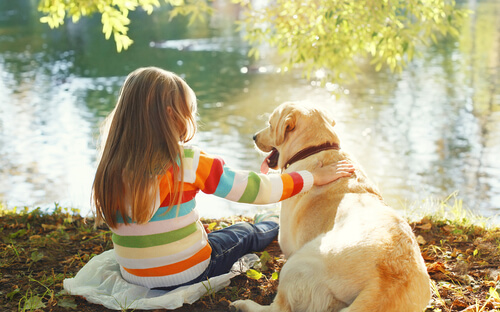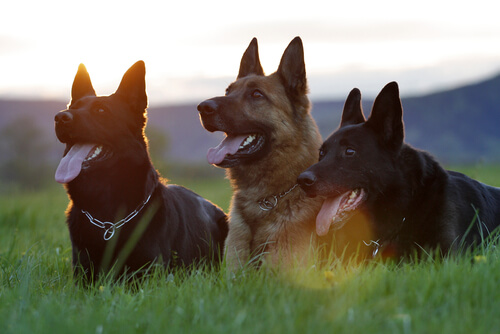Tips for Socializing Your Dog

We all want our pets to be happy and healthy. Did you know that one of the secrets to this is to allow them to have contact with other animals? It doesn’t matter if they don’t live in the same house. In the following article we’ll give you some tips for socializing your dog. Do it as soon as you can!
Why should you socialize your dog?
The socialization of a pet is really important because it prevents aggressive behaviors, fears and destructive habits. Also, it will be easier to train and teach your pet new things, and he will also be more able to enjoy outdoor walks or family holidays.
If you don’t socialize a dog, you may have problems with him in the future. To begin with, he won’t want to go for a walk, he will panic when other animals are around (even those that approach him in a playful or friendly way), and he can become aggressive with children.

You can start to socialize a dog when he is 7 or 8 weeks old. At this stage he is on his own, has left maternal care behind, and does not have his sibling’s company because he has moved to a house where there may not be other animals. So the sooner you start with this task, the better personality your pet will have.
Some owners even begin socialization activities from the time an animal is just a month old. In this case he may be “presented” to those who will be part of his family. It is not just a question of starting as soon as possible, but of knowing the right time to do so. However, the younger he is, the easier it is to get results.
Tips for socializing a dog
1. Wait before taking him away from his mother
Although it is true that a dog can take care of himself after six weeks, it is recommended to leave him with his mother and siblings at least 15 days more. That way he will be used to being with other similar animals, even though each one is independent.
2. Use different strategies
Little by little, you’ll get to know your pet and know which technique is more effective. Maybe it’s walks or the rewards… Maybe the toys or food. But the important thing is that he learns a bit more each time, and becomes more sociable and aware of his environment.
3. Introduce him to things other than dogs
Socialization is not just about making sure that your pet gets along with the neighbor’s dog or your best friend’s dog. It includes his reaction to people, and even objects that appear in front of him. That’s why we recommend that you expand his experiences by taking him to a place where there are flowers, trees, ducks, butterflies…

The idea is for him to have contact with all kinds of things, not just living, and experience noises, smells and sounds that are previously unknown to him. That way he will be accustomed to new things, and will not be terrified by a falling branch, a flying bird or a small child.
4. Avoid negative experiences
Before beginning to socialize a dog, his owners should do some “market research” of the places where they could take their pet. There are many parks that have special areas for dogs, but there may be loose dogs who can be aggressive with newcomers.
If this happens, your puppy will develop trauma that may not allow him to be sociable in the future. And that’s very bad news! Before you approach another pet, speak with its owner in order to know how he might react. At first, it is better for your dog to be near an animal of its own size, and to not be left alone for any reason.
5. Be very patient
Socializing a dog is not a simple task. It takes time, dedication and a lot of patience. But 15 or 20 minutes a day can be enough. Take the time to see how your pet changes, improves and grows.
This text is provided for informational purposes only and does not replace consultation with a professional. If in doubt, consult your specialist.